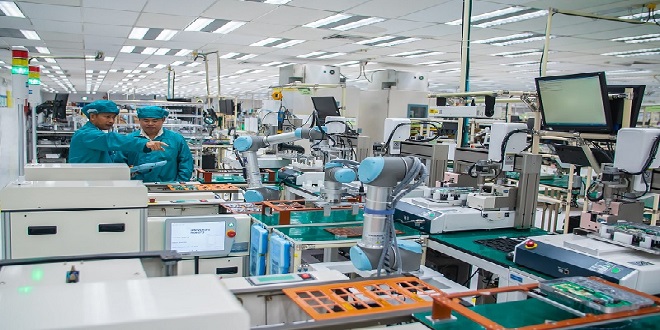
This has led to having cobots being hailed as one of the fastest-growing products in automation, as independent research forecasts sales growth to jump sixfold by 2030.
As we emerge from the COVID-19 pandemic, that push towards automation has never been so emphasized and necessary. With the collaborative nature of the cobots, it is certainly possible to have manufacturing operations run smoothly even with less human intervention, while still realizing productivity gains and business continuity.

Yet, despite the advantages cobots can bring, there are concerns and misconceptions that hinder companies from using the technology. Primarily, cobots can add up to the effectiveness of human labor, can be deployed regardless the scale of operation, and can be easily maintained that is safe and cost-efficient,” said Darrell Adams, Head of Southeast Asia & Oceania for Universal Robots, a Denmark-based collaborative robots (cobots) technology market leader.

It is in this regard Universal Robots provides us some guidance on underscoring the true nature of cobots and separating fact from fiction.
1. Cobots will replace human labor
Cobots actually relieve workers from strenuous and repetitive tasks so that they can take on better, more exciting roles within the company. With the cobots helping to increase productivity, companies often find themselves in a position to hire more people, thus creating jobs, not eliminating them.
According to World Bank’s Enterprise Survey for the Philippines, on average, firms that deployed partial or full automation in their operations would likely hire more workers. As the Philippines ramps up infrastructure improvements, cobots will work productively and smoothly with ingenious and efficient Filipino workers overseeing and operating them.
2. Robotics automation is for complex, large-scale operations
Many Filipino manufacturers think of robots as the image of a large, lumbering box used on assembly lines. The reality is, with the flexibility of cobots, companies can automate even the simplest of tasks. Regardless of the scale of output, cobots can be deployed for processes that are repetitive, manual, or potentially strenuous for workers – such as pick and place, packaging and palletizing, screw driving, gluing, dispensing, and welding.
3. It’s a hassle to implement and maintain robots
It is true that some robots are large, cumbersome, and difficult to operate. One might say they practically require a Ph.D. to run them. But not cobots. Cobots are easy to implement, operate, and maintain. Since cobots are so compact and lightweight, there is no need to change the production layout when switching the cobot between tasks. They are easily programmed or re-deployed and require minimal maintenance. Hence, operations will not be affected despite the shortage of Filipino workers in factories.
4. Cobots are dangerous
With traditional industrial robots, it is impossible to work with them side-by-side without some serious safety concerns. These traditional robots can handle heavier, larger materials and require safety cages to keep humans out of the workspaces.
Cobots are different from traditional industrial robots. They are created with safety in mind, reducing safety risks for workers. Specifically designed to work in conjunction with human workers, they perform best as a minimally disruptive solution to safety concerns.
5. Cobots are costly
There is some truth to this myth – robots can be expensive. Cobots are cost-effective and their installation requires minimal investment, given they do not need major infrastructure changes. Unlike traditional robots, they can also be redeployed to different functions in the production line and used around-the-clock.
While there is so much catching up to do in terms of technological advancement in the Philippines, the country is definitely setting its sights on exponential growth and sustainability with the help of automation.
Automation with humanity in mind is not just possible, but sustainable and safe, with the use of collaborative robots or cobots humming along with humans.





